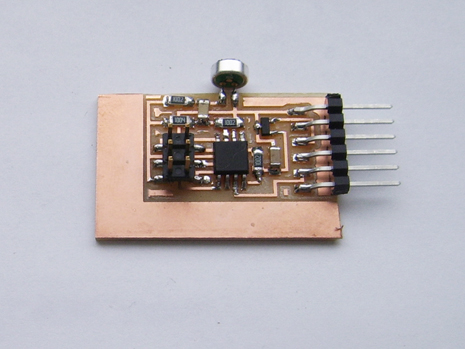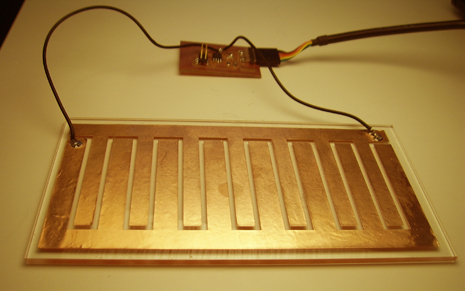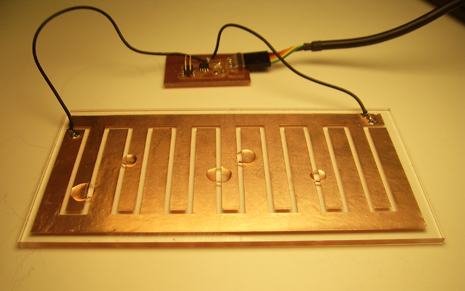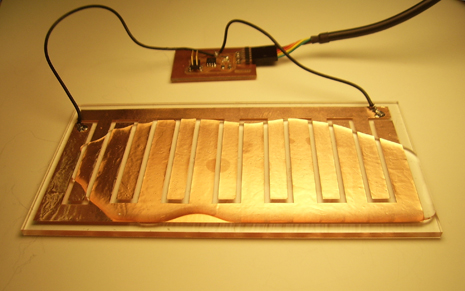| After the light, I tried the sound sensor. First I attempted to redesign the board in Eagle, but I couldn't, so I decided to use Neil's original design. I milled it, stuffed it, plugged it and tried to program it, but nothing happened, except that smell... where is it coming from? .... my board!!! It had gotten really hot, so I unplugged it and tried to figure out what I had done wrong. The microphone was connected in the wrong direction, so I took it out and soldered it again, but still the board gets super hot. I tried to check everything and I could not find the problem (and yes, I checked, and the microcontroller is connected in the right direction), so I decided to leave that project for later. |











